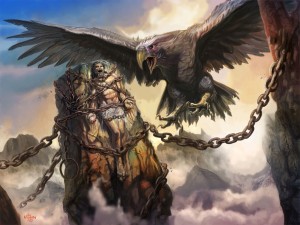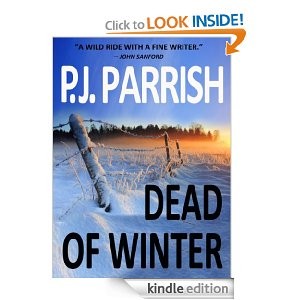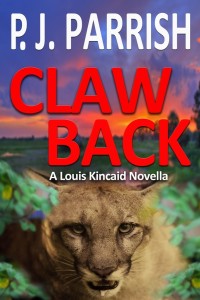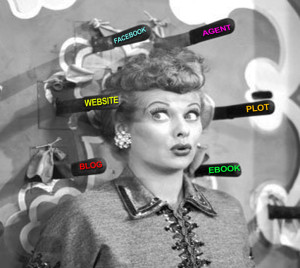I recently joined a critique group. Those who know me might think that’s weird. I’ve been published professionally for more than 20 years. I’ve done my share of teaching and should know how to do this by now. And I have a built-in critique group with my co-author sister Kelly.
So why do I need the tsouris?
Three reasons really. First, just because you’ve written some books doesn’t mean it gets any easier. Second, I now have a second home in the suburbs of the ebook Wild West and you need all the neighbors you can find out here among the wolves and cacti. And third…I’m lonely.
We’ll get back to that last one in a second.
But let’s ask the main question here: Are critique groups worth it? Worth it in time, energy and the bruising your ego will surely take? Should you expose your hatching to the cruel world to be pecked at before it’s barely had the chance to sprout feathers let alone wings? (Whew, labored metaphor alert there).
I used to think critique groups were a waste of time. Maybe that’s because early in my writing life I got involved in one that was really bad. We met at a local bar once a month. (first mistake: combining wine and whine). The members weren’t very good at articulating what was wrong (or even right) in stories and a one guy was really defensive about being rejected by the “Manhattan cabal.” That’s what he actually called New York publishers. I left the group after two sessions, figuring it was cheaper to get depressed at home with a bottle of pinot.
But I think writers are better these days at taking constructive criticism. Maybe it’s because the new world of self-publishing has stripped us of the delusions we might have about how easy it is to write (and sell) a book. Maybe it’s because in these days of change and turmoil, good editors (even those in the Manhattan cabal) are worth their weight in gold. Whatever the forces at work, I think we’re seeing a shift among writers, a new willingness to get help and get better.
So I’ve come to believe that a critique group can be one of the best tools a developing writer can use. Even experienced writers can benefit from them. But there’s a bunch of caveats that go with this. And I’ll get to those in a second too.
First, let me tell you about my little group. There’s four of us and I was the last to join about two months ago after one of the group, Christine Kling, literally sailed off into the sunset. (She’s an avid sailor and decided to pull up anchor and cruise the Caribbean, though she’s back now). That left Sharon Potts, Neil Plakcy, Chris Jackson…and me, the new cucumber.
We meet every two weeks at a Starbucks but in the week prior we send each other our 10 pages. We each then read and “red pencil” our comments on the pages. We use Word’s TRACK CHANGES function. It’s an editing program that lets you insert comments on a document. Track Changes is a little hinky to learn at first but it’s a cool tool. And most editors in publishing are now using it for their author revisions and expect you to know it as well.
Why just 10 pages at a time? Well, too much makes you skim over surfaces. You can really focus down on a book’s problems if you take it in small bites.
What things? We try not to nitpick and line-edit. That’s for second and third drafts and hopefully copy editors. What we try to help each other with is the Big Picture. Where the plot is going into the ditch, where the character development is lacking, and what — and this is important — to the cold eye seems confusing. But we try to stay flexible. We made an exception to our 10-page rule last week for one of our members. She is struggling with a very complex thriller. Her plot had become a hyrdra-beast and she wanted help simplifiying it. So she gave us a concept and we went from there.
At Starbucks, we pick one author to critique and we take turns going over our Track Change comments (we bring printed-out copies to give to each writer). We also encourage the other critiquers to jump into the conversation if they want to add something to the point at hand. These sessions run about four hours, three lattes and at least one pee break.
Have they helped me? Immensely. I am working on a new Louis Kincaid series book and after I offered up my opening chapter, I was told the tone was completely at odds with where I had left my hero in the previous book. That was a major revelation that has made me rethink my first six chapters. I also came to realize I’ve lapsed into a lazy habit of underwriting. My critique mates want a little more description and detail from me. (Ironically, my sister tells me the same thing). I also learned my treatment of my series backstory (always a tricky thing) was deficient. I was mentioning characters and situations from previous books that weren’t explained enough in the present one to stave off confusion.
What’s really good about getting this kind of feedback is not that they are trying to tell me how to write my book. It’s that this will save me valuable time. In rewrites, of course, but also later when I am deeper into the plot. It’s like hiking through a forest. Alone, I might have gotten far into those dark woods, realized I had lost my way back on that first turn, and now I have to backtrack to find my way out. Without falling off the ridge.
My hiking mates aren’t telling me where to go. They’re just keeping me on the path I have already chosen.
So, is a critique group for you? I can’t answer that, of course. But I can pose some questions for you:
1. What kind of group do you need? Ideally, face-to-face. If you can stay within your genre, also good but not essential. Good writing is the same whatever the genre. But I’d stay with fiction. Non-fiction folks have their own unique needs.
2. Where are you in your skill level? You need to find like-minded writers but it’s always better if you can link up with some folks who’ve been published. As the saying goes, you want to play tennis with someone better than you or you never improve your game. But be willing to take the heat. If the group seems like a mere pity-party — ie, everyone bitching about their lack of success — get out as soon as you can. It’s cathartic to exchange tales of woe but it should be limited to small-talk after the hard work is done.
3. Where can you find a critique group? If you’re isolated geographically, there are online groups but it’s pretty gnarly out there, almost like cyber-dating. (There’s one group, Ladies Who Critique, that’s females-only). Start here for a list. The best way, I think, is through writers organizations. I found my group via contacts I made through my Mystery Writers of America Florida chapter. If the organization doesn’t offer critiques, network and start one yourself. All you need is two or three other committed people. Here’s some good advice on starting your own.
I can also give you some advice on how to handle yourself if you do decide to join a group:
1. Make a commitment. You’ll get only as good as you give. If you join up, be willing to spend whatever time it takes helping the others with their WIPs. Nobody likes the guy who shows up at the party empty-handed, drinks all the good booze and sits in the corner with nothing to say.
2. Be tough but kind. The best editors I’ve had always know how to make revision letters sound like they are really praise letters. They always tell you what you did brilliantly before they smack you upside the head and tell you where you royally screwed up.
3. Don’t get defensive. We are all soft-shelled about our writing but if you can’t take constructive criticism, don’t join a group. Hell, don’t even try to be a real writer for that matter. At our last session, I got defensive about fried pickles. My hero Louis orders a basket of fried pickles. It was one throwaway line but one of my critique buddies wanted more about the pickles. (It’s hard to explain but she was right.) I spent five minutes trying to justify why I didn’t want to write more about those friggin pickles. Later, I realized it had nothing to do with pickles and everything do to with me being prickly.
4. Don’t ever say “Yeah, but…” This is a variation on No. 3. One of your critique mates says, “I can’t figure out what is going on in this scene where the guy is stealing the fried pickles.” And you say, “Yeah but if you just wait until chapter 26, it will all be explained.” If someone is confused by what you’ve written you should listen to them. Misdirection is a great writer’s tool. But it is not the same as confusion.
5. Don’t get depressed. Having folks tell you what is wrong with your story is not easy to hear. But a good critique group can be really inspiring. It can teach you that all writers struggle, that first drafts are never meant to be perfect, and that you can, despite what all the demons in your head are whispering, fix it. Yeah, you might feel like that guy in the picture at the beginning of this blog — that’s Prometheus, who Zeus tied to a rock and sent down an eagle to peck the guy’s liver to shreds. But you can also get a big dose of camaraderie through a good critique group.
And that brings me back to my last point — the thing I said about feeling lonely.
We all do, right? We sit here in our old yoga pants and Bob Seger t-shirts, poking away at our keyboards, hoping this STUFF we are storing away each day might actually coalese into a book and be read someday. We surf the internet, read articles about how to improve our craft and blogs about how to market them. But sometimes, as that great western philosopher Bruce Springsteen says, all we really need is some human touch.
We need to know we’re not alone. We need to hear other footsteps behind us on the path.








